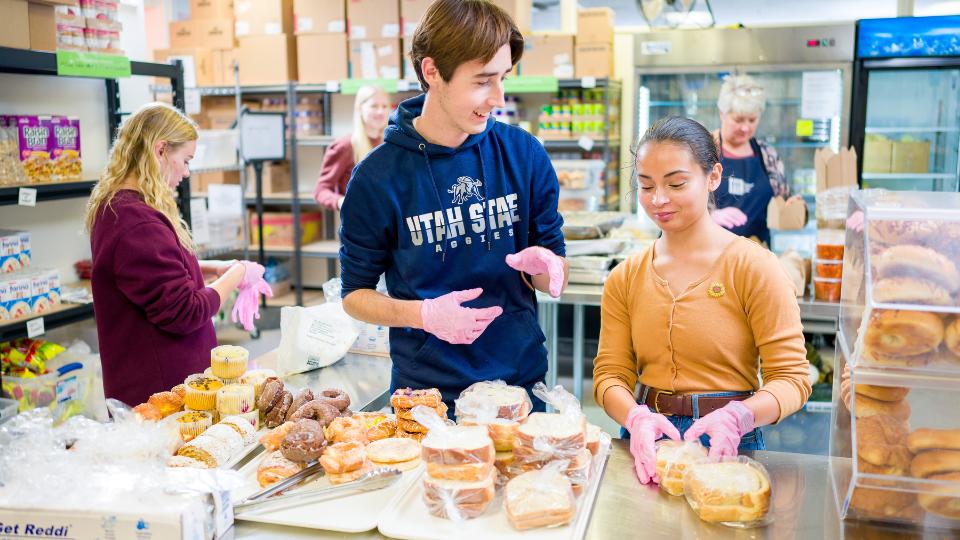New Utah Food Security Council Based at USU

One in 10 Utah households experience food insecurity, and more than 102,000 Utah families do not have the resources to buy enough food, according to the “Household Food Security in the United States” annual report for 2020.
To coordinate efforts to relieve the ever-growing hunger problem in Utah, the Utah Food Security Council was formed during the 2022 Utah legislative session. Sponsored by Utah Senator Luz Escamilla, the council will be based out of Utah State University and will help provide recommendations to lawmakers. In addition to Utah State University Extension, the council includes Utah Farm Bureau, the Utah Department of Agriculture and Food, the Utah Department of Health, Utahns Against Hunger and other agencies working on food security efforts.
Heidi LeBlanc, director of the USU Hunger Solutions Institute and the Create Better Health Utah (SNAP-Ed) program, believes that USU is the perfect fit for housing the Utah Food Security Council.
“The USU Hunger Solutions Institute is already in place as an integrated academic, Extension, and community organization dedicated to finding solutions to Utah hunger,” she said. “Now, as we host this new council, we will be able to increase partnerships and collaborations at state and grassroots levels. We will strive to provide solutions, discuss ideas, and create innovations that help individuals and families who wonder where their next meal will come from gain food security.”
In 2020, Senator Escamilla introduced Senate Bill 141, Task Force on Food Security, to develop a plan to establish food security in the state.
“Food insecurity is one of the most pressing issues facing Utahns, and I am eager for the meaningful policy recommendations and initiatives that will come from the Food Security Council,” she said. “In the final days of the 2022 legislative session, my bill to codify and establish the council at Utah State University was one of my top priorities. To effectively address complex problems in our state, thoughtful action and a variety of expertise and lived experiences should be at the forefront. The council’s membership intentionally incorporates a range of professions and stakeholders to attentively work on statewide goals and strategize comprehensive solutions to address food insecurity, including increasing support for our local growers and producers.”
The goals of the Utah Food Security Council include:
1) Increasing economic security for all individuals in the state; 2) Increasing public awareness and understanding that ending hunger is vital to the health and wellbeing of the state’s residents, economy and communities; 3) Increasing access to affordable, nutritious and culturally appropriate food within the community where an individual lives; 4) Increasing the number of individuals who can access nutritious food assistance through community-based organizations; 5) Maximizing enrollment in the Supplemental Nutrition Assistance Program (SNAP) to improve food access and nutrition education; 6) Improving children’s health by optimizing participation in federal child nutrition programs; and 7) Removing barriers for senior citizens to access food security.
LeBlanc said the food security council will also look at the bigger picture of access to healthy food and grocery stores in Utah to make better policy decisions.
“Food insecurity is generally a symptom of broader financial insecurity,” she said. “Food is often one of the only variable expenses for households on a tight budget, as opposed to car payments, rent, etc., which means it is frequently the first expense to be cut. The Utah Food Security Council will be a great help in implementing lasting policy solutions to help increase access to food for all Utahns.”
The council held its first meeting in June, where co-chairs were selected and three working groups were established to identify recommendations for the Utah State Legislature. They include economic stability, policy and access to healthy foods, and outreach and community food resources.


 Utah 4-H & Youth
Utah 4-H & Youth